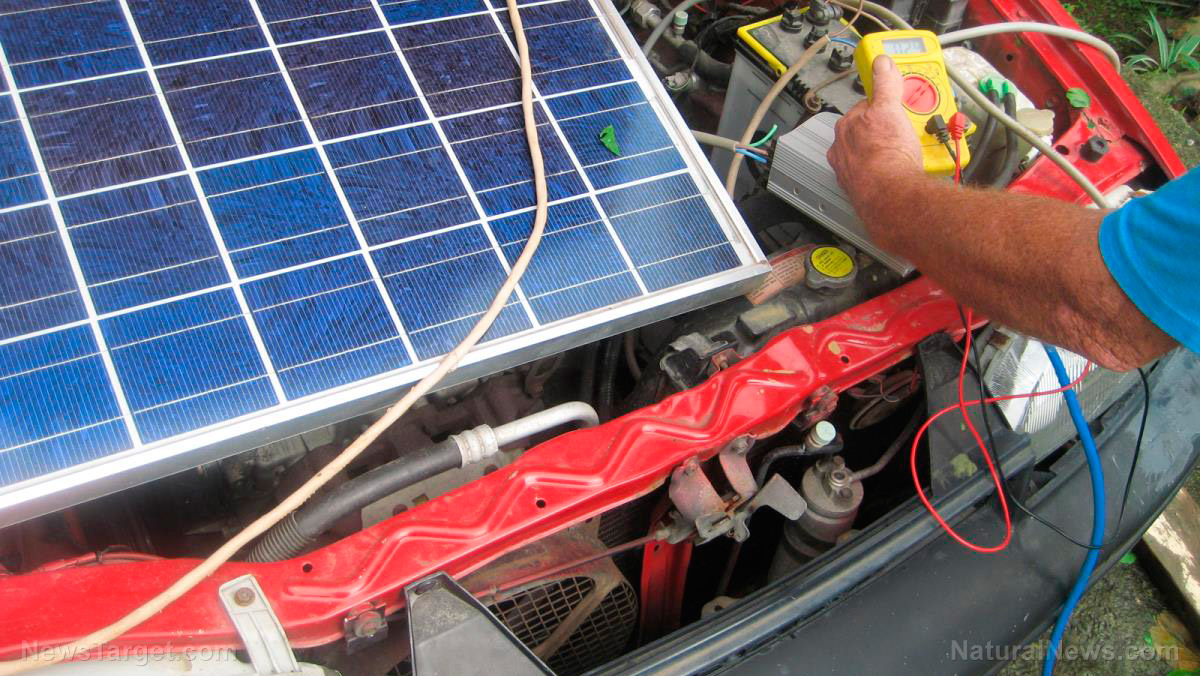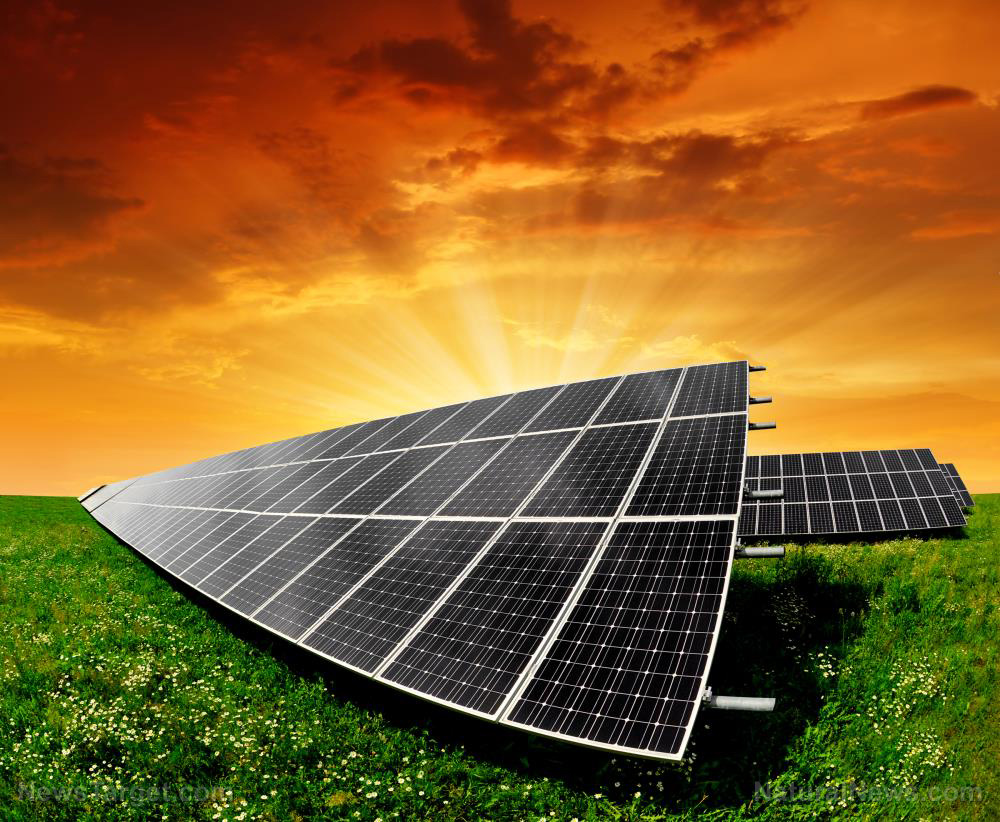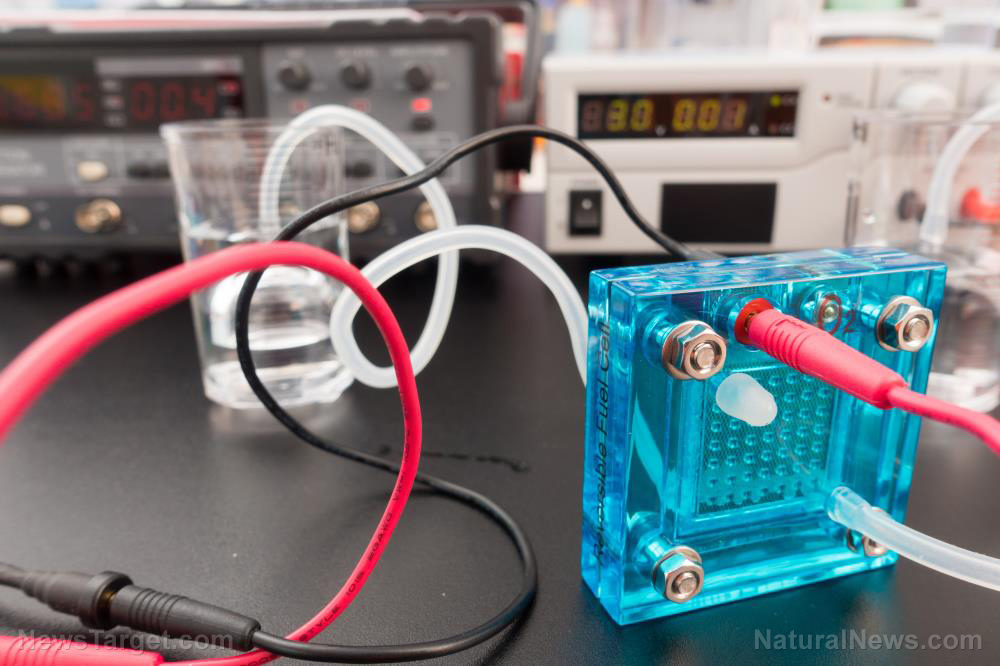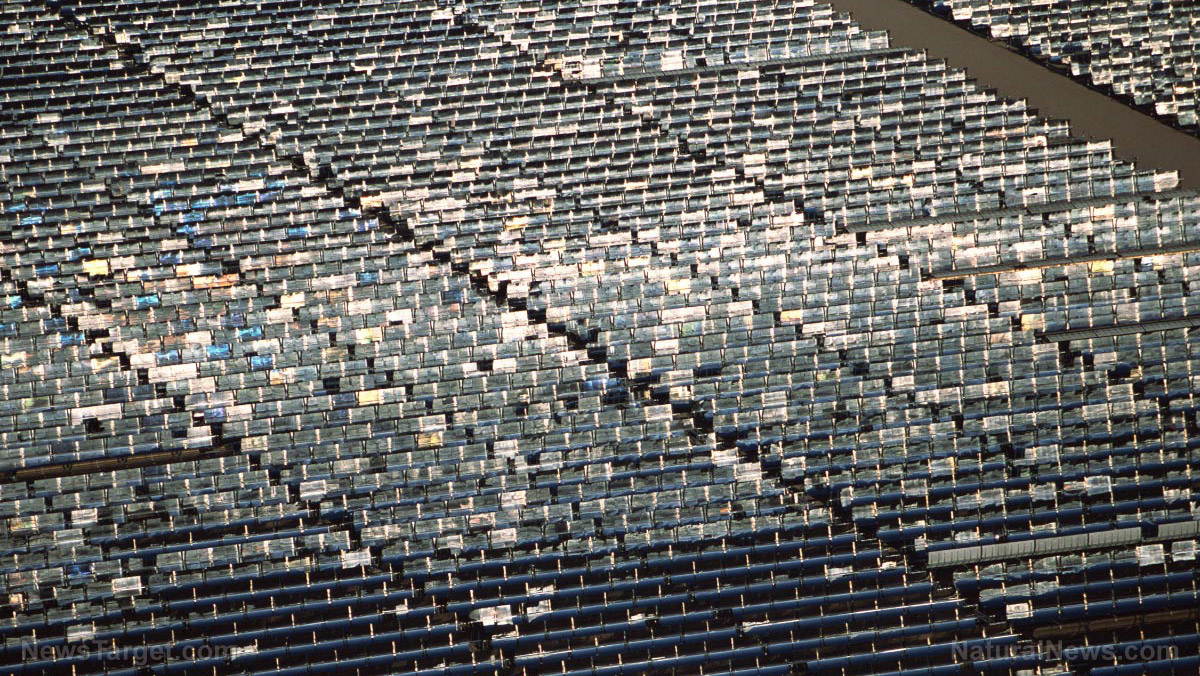Physicists develop new material that could be used for “high-efficiency, lower-cost solar cells”
11/21/2019 / By Edsel Cook

Researchers have not yet solved the biggest weakness of solar panels – their inability to produce power when there is no steady source of bright light. However, they were happy to announce that they have increased the efficiency of perovskite solar cells to take advantage of the limited daylight hours.
University of Toledo (UT) researcher Dr. Yanfa Yan led efforts to raise the capability of solar panels to new levels. He made a recent breakthrough in the chemical formula and manufacturing of perovskite materials.
The UT team cooperated with the National Renewable Energy Lab (NREL) and the University of Colorado. They developed a “tandem perovskite solar cell” that boasted even greater efficiency than the earlier versions.
Perovskite compounds receive a unique crystalline structure from the chemical process that creates them. Their crystals make it possible to turn sunlight into usable electrical energy.
Currently, silicon remains the preferred material for building solar panels. Perovskites are much more expensive and have issues such as containing lead, which is toxic to humans.
“We are producing higher-efficiency, lower-cost solar cells that show great promise to help solve the world energy crisis,” Yan reported. (Related: 10 Ugly truths about long-term power outages and how to deal with them.)
Researchers improve the performance of perovskite materials by adding another toxic chemical
The UT-led team’s research paper described how they refined the ratios and mixture of lead and tin that comprised perovskites. They sought to maximize the efficiency of the material at converting light into electricity.
Silicon-based solar panels usually attain an 18 percent efficiency rating. In comparison, a cell made from the new “tandem perovskite” material reportedly reached around 23 percent.
Yan chose to add guanidinium thiocyanate to the mixture of lead and tin. A denaturing agent with harmful effects on humans, the additional chemical boosted the ability of the perovskite material to turn sunlight into electricity.
His UT team had plenty of experience working with perovskites. In 2014, Yan and other researchers were the ones who identified the ideal properties of the material.
Since then, Yan has concentrated on developing an all-perovskite tandem solar panel. The design put together two different photovoltaic cells to increase the total amount of electrical power produced by the device.
Each solar cell captured a different range of frequencies in sunlight. As such, a tandem device produced more energy than either of the individual units.
Yan claimed that the recently developed perovskite material could provide everything that the solar power industry needed.
Some groups were already throwing money at the new technology. The US Department of Energy granted $1.1 million to Yan’s team so that they would continue cooperating with its NREL laboratory.
Tandem perovskite solar cells achieve greater efficiency by using more dangerous materials
“Our UToledo research is ongoing to make cheaper and more efficient solar cells that could rival and even outperform the prevailing silicon photovoltaic technology,” explained UT researcher Dr. Zhaoning Song, the co-author of the study.
Not only did the tandem solar cells with two layers of perovskites deliver high power conversion efficiency, but they also promised to reduce the cost of producing solar panels. Cheaper units would make them more attractive to users.
However, the new and improved perovskite material faced several serious drawbacks. First, even its creators didn’t know how long it would last.
Second, it used dangerous substances. Like any perovskite, it used lead, a toxic heavy metal that kills 412,000 Americans each year.
Further, it featured guanidinium thiocyanate, a harsh chemical that harms anyone who inhales, touches, or swallows it. It causes severe skin burns and damages the eyes. If it ends up in water as a pollutant, it will harm aquatic life for extended periods.
Sources include:
Tagged Under: badtech, breakthrough, Chemistry, electronics, Lead, materials research, materials science, perovskite, physics, power grid, renewable energy, solar panels, solar power, toxic chemicals
RECENT NEWS & ARTICLES
COPYRIGHT © 2017 SOLARPANELS.NEWS
All content posted on this site is protected under Free Speech. SolarPanels.news is not responsible for content written by contributing authors. The information on this site is provided for educational and entertainment purposes only. It is not intended as a substitute for professional advice of any kind. SolarPanels.news assumes no responsibility for the use or misuse of this material. All trademarks, registered trademarks and service marks mentioned on this site are the property of their respective owners.



















